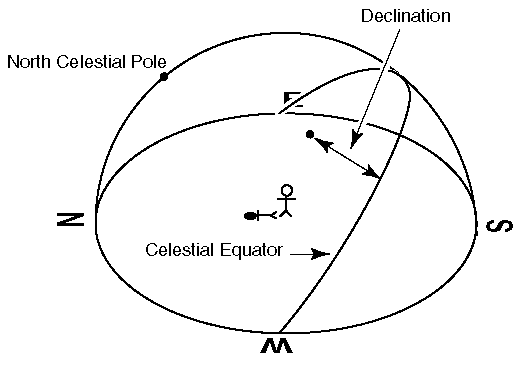I had to draw two star maps for my Astronomy class. They were only meant to be rough maps. I would like to know:
If you were to draw a star map showing Right Ascension and Declination (I have yet to actually see a star map that does show them), would the lines of Right Ascension and Declination appear on the star maps as arc's of circles, ellipses or something else?
I took an educated guess and said they would appear as arc's of circles, and then I used elementary trigonometry and co-ordinate geometry to draw the lines. The stand-in lecturer told me I didn't need that much accuracy, and did not know how the lines would appear, but said they would probably be ellipses. At the present moment I can not recall what my line of reasoning was, but I had reasoned, somehow, that they would be circle's. It must be taken into consideration I had this epiphanic moment late at night with a caffeine buzz...
I guess the question amounts to this (if you're not familiar with star maps):
Consider a hemisphere with staight lines between any two points drawn on its surface. If the hemi-sphere was translucent, if the lines were viewed from a perspective they would appear to be semi-circle. I dont think I'm making much sense... but its like the lines of latitude and longitude on a globe of the earth. If these lines were projected (say, by an incident ray of light perpendicular to the base of the hemi-sphere) onto the base of the hemi-sphere, how would those lines appear as projected? Arcs of circles, ellipses or something else?
I know this is very badly worded, I am sorry, I dont know how else to say it, and I cant find an appropriate image. Please help me, thank-you.

If the line streching from E to W was projected onto the surface the man is standing on, such that looking at the surface from underneath would be the same as looking at the line on the hemi-sphere from on the surface, how would the line appear on the surface?